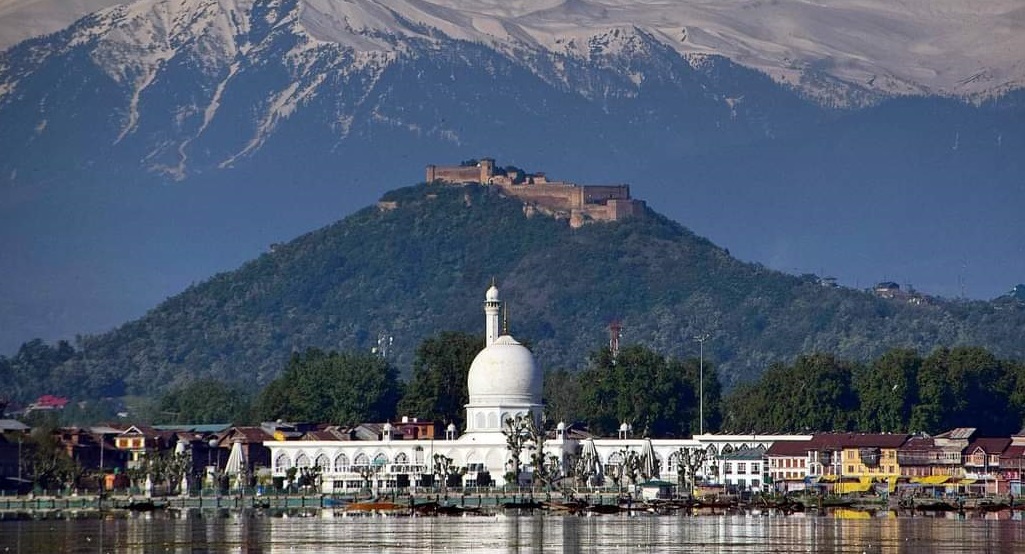The UT is emerging as an attractive investment destination and big companies are showing interest in investing in J&K, writes Deepika Bhan…reports Asian Lite News
In the fifth year since the abrogation of Article 370 and the bifurcation of the erstwhile Jammu & Kashmir, it is time for Kashmiris to reflect back and count the gains and losses.
The gains are visible and noticeable, but the losses are deep within, manifested by broken communities and crashing identities.
On August 6, 2019, Parliament approved the resolution to repeal Article 370, paving the way to truly integrate J&K into the Indian Union. And since then, a series of measures have been taken to normalise the terror-stricken place and the results are there before everyone to see.
For the first time in the history of Jammu and Kashmir, a record 1.88 crore tourists visited the UT in 2022. From January 1 to June 19 this year, more than 15,000 foreign tourists have flocked to the Valley.
The surge in the number of international tourists is a big leap from the figures of the previous year, when 4,028 foreign visitors arrived in the same period.
The UT has seen a remarkable reduction in organised stone pelting incidents linked to the terrorist-secessionist agenda. The number of such incidents, which stood at 1,767 in 2018, has dropped to zero this year.
The G20 Tourism Working Group meeting in Srinagar this past May, which was attended by 17 member countries, was a watershed moment in the UT’s tourism history.
The UT is emerging as a vibrant, fast-growing and attractive investment destination and big companies from across the country and abroad are showing interest in investing in J&K. The New Central Sector Scheme for the Industrial Development of Union Territory of Jammu & Kashmir, with an outlay of Rs 28,400 crore, has received 5,372 investment proposals worth Rs 70,000 crore.
With the extension of 890 Central laws to J&K, the repeal of 205 state laws and modification of 129 laws after the abrogation of Article 370, a system of equitable justice has been established for all sections of people.
The rights of weaker sections such as the Scheduled Tribes, other traditional forest dwellers, Scheduled Castes and Safai Karamcharis are now ensured by the application of the relevant Acts. Quota rules have been amended to extend the benefits of reservations to the left-out categories such as the Pahari-speaking people and the economically weaker sections.
For the first time the spouse of a J&K domicile is now deemed as one too. Earlier, spouses of Permanent Resident Card holders were considered one a par, but still not regarded as domiciles.
The list of gains is too long.
The benefits that the people are now getting are unprecedented in the region’s history. Perhaps, that is the reason for the mass silence in Kashmir.
There are no protests, stone pelting or shutdowns even as day-to-day hearings of the petitions pertaining to Article 370 continue in the Supreme Court. Even the local press, which played a dubious role in fomenting terror in the late 1980s, and came across as mouthpieces of separatist groups, have avoided any debate over Article 370.
There has been silence since August 5, 2019, when Union Home Minister Amit Shah announced in the Rajya Sabha that the government has scrapped the special status granted to the state of Jammu and Kashmir by modifying Article 370 of the Constitution.
The same day the Rajya Sabha also passed the Jammu and Kashmir Reorganisation Bill, which proposes the bifurcation of the state into two union territories — Ladakh and Jammu & Kashmir.
The unexpected decision stunned the people in Kashmir into silence. What added to this was the indifference of the big powers and the rest of the world to the Government of India’s action. Pakistan did go ballistic, but no one in the world cared and has not in the last four years.
This added to the shock and created fear among the anti-India forces in Kashmir. The strong action taken by the various central agencies against terror and separatist groups, including the Pakistan-propped Hurriyat Conference, has reassured the masses.
The crackdown has blunted the so-called ‘invincible’ image of the terror bogey created by Pakistan and its supporters in the valley.
The people are no longer behaving like the ones who used to follow the Pied Pipers of Pakistan. They are silently picking up all that they are getting after the abrogation of Article 370.
Even as the nation celebrates Kashmir Integration Day, the people in the valley need to reflect on this day.
Mahatma Gandhi visited the valley on August 2, 1947, and had said “Kashmir is a ray of hope”. He had also said, “If anyone can save Kashmir, it is only the Muslims, the Kashmiri Pandits, the Rajputs, and the Sikhs who can do so.”
But terrorism laid bare the faultlines in the state as the minorities were targeted and forced to leave en masse. Around 7 lakh Kashmiri Pandits and hundreds belonging to other religious minorities fled the valley — and the majority community remained silent.

